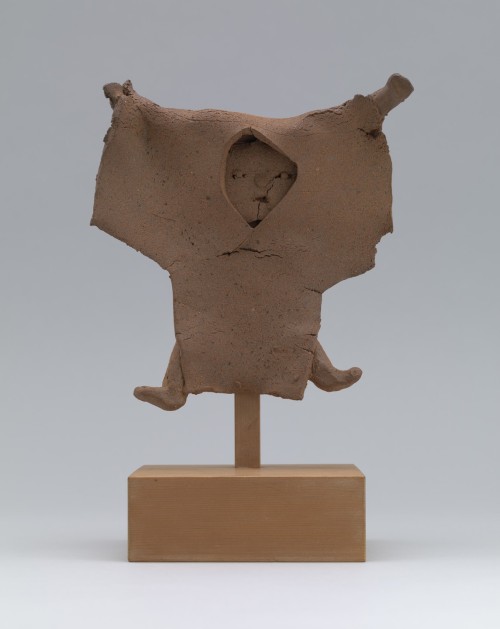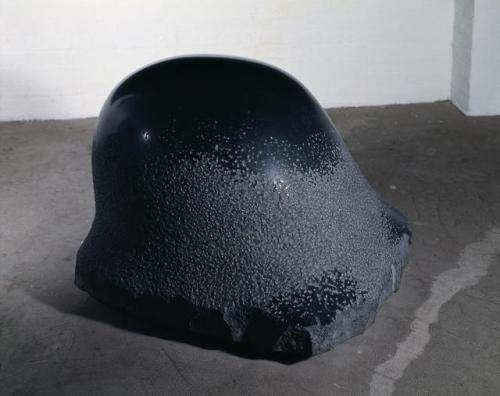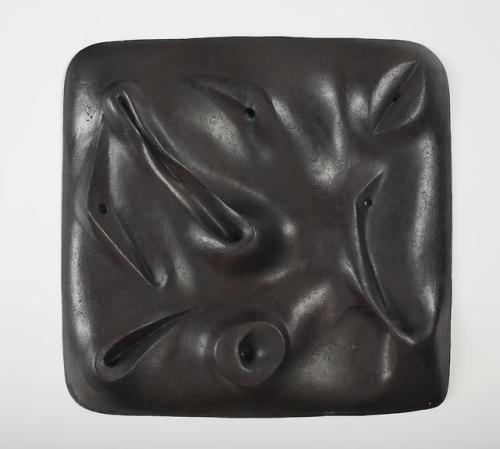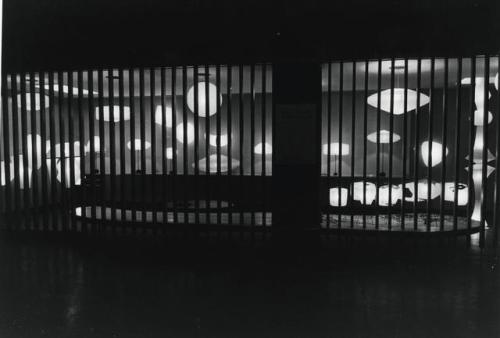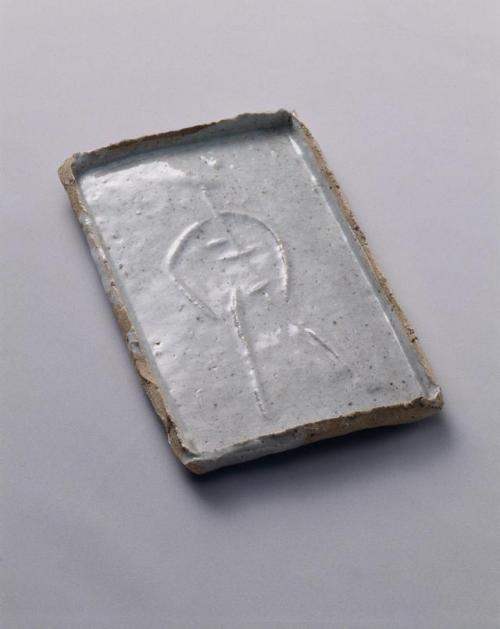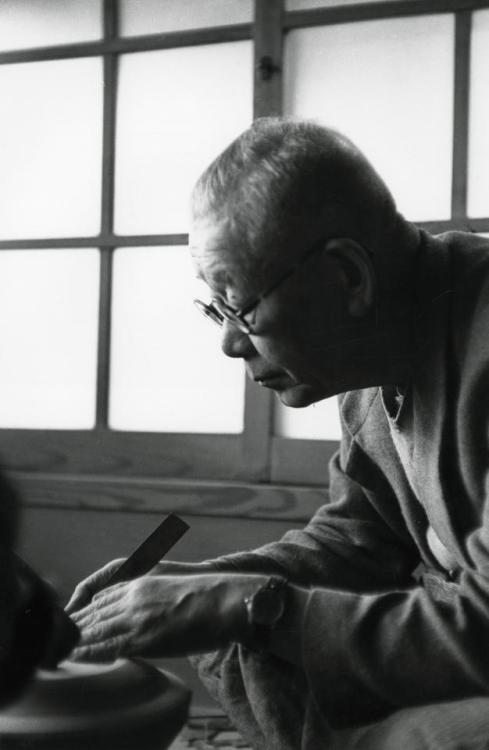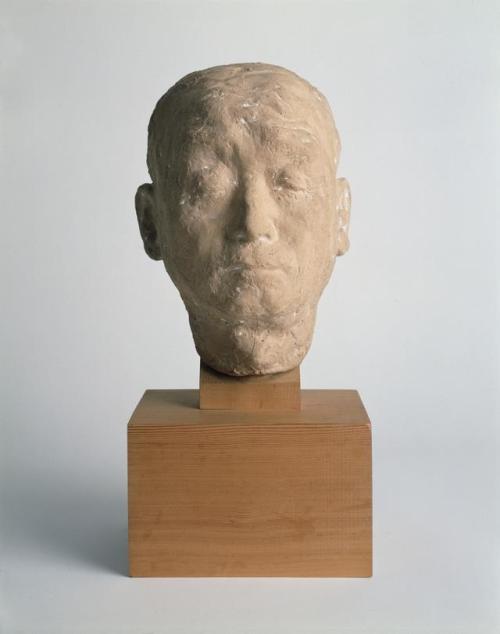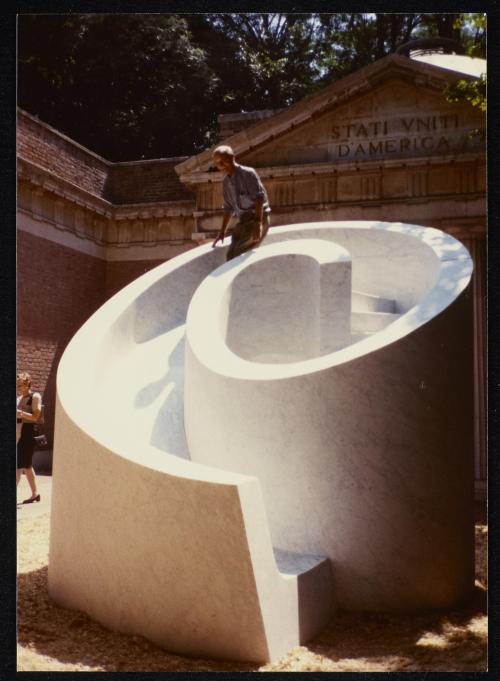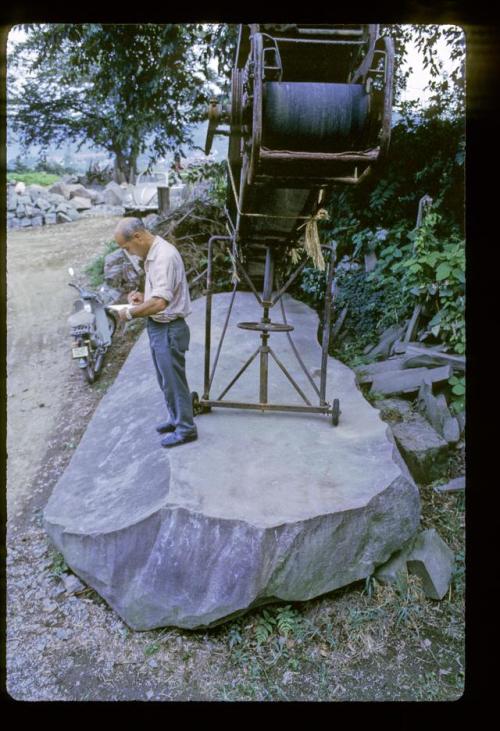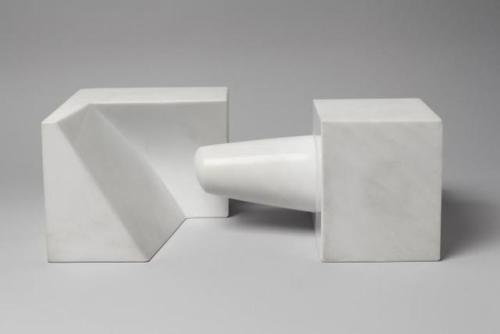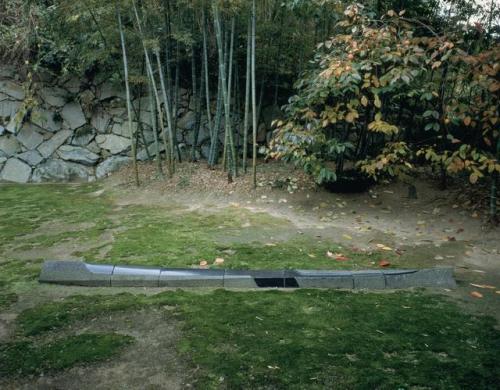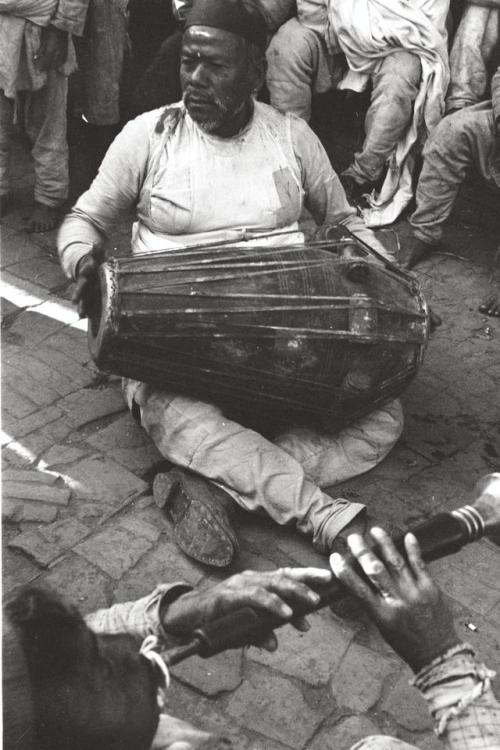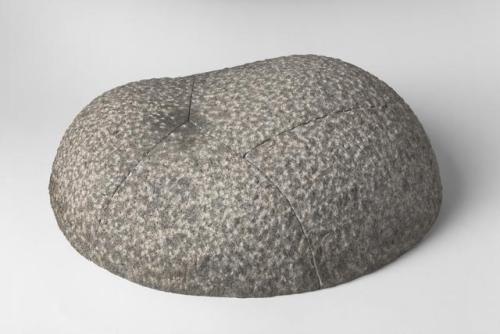#isamunoguchi
New Yorkers are known to be jaded. We can pass by something over and over and over again and not even know what it is and why it’s there.
This bright red painted steel of Isamu Noguchi’s Red Cube stands out in strong contrast to the blacks, browns, and whites of the buildings and sidewalks around the sculpture. Located in Financial district, Red Cube is surrounded on three sides by skyscrapers, the height of which draw a viewer’s eye upwards. The sculpture itself adds to this upward pull, as it balances on one corner, the opposite corner reaching towards the sky.
Through the center of the cube there is a cylindrical hole, revealing an inner surface of gray with evenly-spaced lines moving from one opening of the hole to the other. Looking through this hole, the viewer’s gaze is directed towards the building behind, tying the sculpture and the architecture together.
Although Noguchi began his sculpting career creating individual pieces, he spent a number of years in the 1940s and 50s working primarily on designing spaces, such as gardens and plazas.
Born in Los Angeles in 1904, Isamu Noguchi was an American artist and industrial designer who is regarded as one of the twentieth century’s most important sculptors. However, then, the son of Yone Noguchi, a Japanese poet, and Léonie Gilmour, an American writer who edited much of Noguchi’s work, wasn’t recognized as a sculptor for a while. Abandoned by his father at the age of one, he grew up with his mother.
He was discouraged by friends and mentors from pursuing art. He later decided to pursue sculpture and apprenticed with artists around the world. None of his early works gained him any recognition or provided financial support for a while. But he did manage to meet Frida Kahlo and have a brief affair with her.
His first attempts at the Public Works of Art Program proved unsuccessful, as one after another of his submissions were declined. Red Cube was finally accepted in 1968.
It is also said that the the sculpture represents a die, a roll of chance. #redcube #isamunoguchi #sculpture #sculptureart #sculptures #nyc #newyorkcity #newyork #history #funfacts (at HSBC Bank)
https://www.instagram.com/p/CMVwzkFj_si/?igshid=1ilckwv3e29nk
Post link
Big Boy, Isamu Noguchi, Kamakura, 1952,MoMA: Painting and Sculpture
A. Conger Goodyear Fund
Size: 10 ½ x 6 7/8 x 4 ½" (26.5 x 17.4 x 11.4 cm) including base
Medium: Unglazed Karatsu red stoneware and wood
http://www.moma.org/collection/works/80843
Post link
Isamu Noguchi, Origin, 1968, Black African granite
Photo by Kevin Noble
The Noguchi Museum Archive
Post link
Akari Space, a 2018 construction based on Isamu Noguchi’s Akari PL2 screen (c. 1973).
Installed as part of The Noguchi Museum’s 2018 exhibition, Akari: Sculpture by Other Means, on view through January 27, 2019. More info here:
http://www.noguchi.org/programs/exhibitions/akari-sculpture-other-means
Post link
Building up to our next highlights exhibition, Akari: Sculpture by Other Means, opening February 28, 2018 an on view through January 27, 2019
Installation of "Isamu Noguchi and Hiroshi Teshigahara,“ Sogetsu Art Museum, November 20, 1980 - December 20, 1980.
Unknown photographer
The Noguchi Museum Archive
Post link
Isamu Noguchi, Blackness, 1967-70, basalt on pine base
Photo by Shigeo Anzai
Private collection, on long-term loan to The Noguchi Museum
Post link
Promotional material related to Isamu Noguchi’s commission for the First National Bank, c. 1961
The Noguchi Museum Archive
Post link
Isamu Noguchi, This Tortured Earth, 1942 - 1943 (cast in bronze 1977)
Installed as part of Self- Interned, 1942: Noguchi in Poston Relocation Center, closing this Sunday, January 28
Photo by Kevin Noble
The Noguchi Museum
Post link
Photograph by Isamu Noguchi of a display of his Akari Light Sculptures at Chuo Koron Gallery, Tokyo, August 1952.
The Noguchi Museum Archive.
Post link
Isamu Noguchi, Erai Yatcha Hoi (Kintaro), 1931, terra cotta
Unknown photographer
The Noguchi Museum Archive
Post link
Isamu Noguchi, Small Plate with Figure, 1952, Seto stoneware, Shino glaze
Photo by Akira Takahashi
The Noguchi Museum
Post link
Isamu Noguchi, Zazen, 1982-83, Hot-dipped galvanized steel
Photo by Kevin Noble
The Noguchi Museum
Post link
Photographs by Isamu Noguchi (top) of his collection of ceramics by his friend and mentor Kitaoji Rosanjin, May 1963 and; (bottom) the master at work, 1952.
The Noguchi Museum Archive
Post link
Isamu Noguchi, Uncle Takagi,1931, terracotta
When Noguchi arrived in Japan in 1931, his first visit since childhood, he had a tense visit with his estranged father, Yonejiro, and Yonejiro’s wife and family. “My Uncle Takagi gave me a new house to stay in, and showered me with kindness, as did other relatives who gave me to understand that they favored my mother.” (Isamu Noguchi, A Sculptor’s World, New York: Harper & Row Publishers, 1968: 20.)
The Noguchi Museum
Post link
An 82 year-old Isamu Noguchi tests his Slide Mantra at the 1986 Venice Biennale.
Unknown photographer
The Noguchi Museum Archive
Post link
Isamu Noguchi was born on this day, November 17, 1904
(top) Noguchi at a festival in Japan, 1960s (unknown photographer)
(middle) Noguchi standing on stone in Japan, 1960s (unknown photographer)
(bottom) birthday wishes from Barbara and George Kovacs, 1977
The Noguchi Museum Archive
Post link
Isamu Noguchi, White Composition, 1970, Statuary marble
Photo by Kevin Noble
The Noguchi Museum
Post link
Isamu Noguchi, Ground Wind # 1, 1968, African and Swedish granite, as installed by Noguchi behind his residence at his studio in Mure, Japan
Photo by Kozo Watabiki
The Isamu Noguchi Garden Museum Japan/ Collection The Isamu Noguchi Foundation and Garden Museum
Post link
Photograph by Isamu Noguchi of street musicians in Kathamndu, Nepal, ca. mid- 1950s
The Noguchi Museum Archive
Post link
Big Boy, Isamu Noguchi, Kamakura, 1952,MoMA: Painting and Sculpture
A. Conger Goodyear Fund
Size: 10 ½ x 6 7/8 x 4 ½" (26.5 x 17.4 x 11.4 cm) including base
Medium: Unglazed Karatsu red stoneware and wood
Post link


